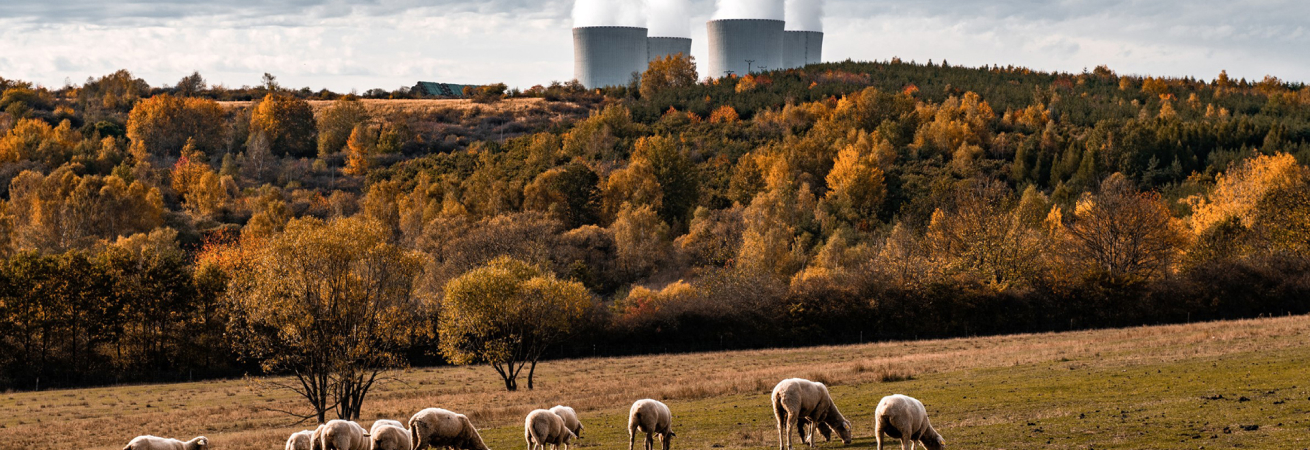
SMRs are definitely not competition for large units. They provide different possibilities as well as capacity. Compared to larger units, however, they can be placed closer to inhabited areas, which favours their use in heat generation. SMRs are also expected to have more compact emergency planning zone, which makes them more suitable for regulatory purposes. A disadvantage is their lower capacity in conventional power generation.
The SMRs we are considering deploying before 2050 are from the group of light-water reactors (pressurised water and boiling water). Pressurised water SMRs do not significantly differ from the VVERs we operated. In boiling reactors, the steam that propels the turbine is typically generated directly in the reactor, which eliminates a cooling circuit and some parts of large equipment. That is why, structurally, boiling water reactors are simpler, but their specific arrangement means that the primary circuit is larger and involves more equipment, which is subject to stricter requirements. Basic principles in the functioning of a nuclear power plant and of nuclear safety are very similar.
Yes, they can. While SMRs operate best at nominal parameters, certain types are, able to safely operate between 20 and 100%.
SMRs need water primarily for cooling circuits when using conventional cooling towers. The water consumption per unit of energy produced is similar to that of large units, i.e., around 6 million cubic metres per year for a 200 MWe unit (i.e., approx. 200 l/s), or 15 million cubic metres per year for a 500 MWe unit (approx. 500 l/s). However, dry cooling can be used in all of the reactors under consideration, where the water requirements are minimal.
Given the size of the coal power plants that has to be replaced, and their operating properties, gas and small nuclear reactors can be deemed adequate substitutes.
The definition of an SMR says directly that these are at least III+ generation reactors, meaning with an emphasis on inherent safety (ensured by physical principles) and on passive safety systems. The requirements for SMRs in the capacity levels we are considering (over 100 MWe) are virtually the same as for large units. Using the vocabulary of a contemporary approach to nuclear safety, we are focused on SMR projects only where “explosion” is practically eliminated.
In theory, SMR reactors have smaller active zones with longer fuel change intervals. But if we relate the volume of used fuel generated per unit of energy produced, SMRs work out differently – a somewhat greater amount, but with different parameters, too. SMR fuel is usually the standard fuel used in large units but shortened. That is why it is handled exactly the same as burnt-out fuel from large reactors.
The SMR programme plans to build the first one at Temelín, in the immediate vicinity of the existing power plant.
We do not have the ambition to build the first SMR of its kind, but we do want to be an early follower.
Temelín is an existing nuclear site which is well known, including long-term monitoring related to the operation of existing units. This will allow to cut down on the time of site preparation.
The requirements for the operation of an SMR are set by the Atomic Act and the related Decrees. The requirements concern both organisation as well as individual staff in positions important in terms of nuclear safety and operation of the power plant. Those requirements are essentially the same as in the case of large units.
The design lifetime of the proposed designs that are interesting for deployment in the Czech Republic are 60 years, exceptionally 80 years.
Even the “largest” of the projects in which we are interested can fit on 20 ha. To this, the area required for setting up the site must be added.
The costs of any large construction project are known only after the work is accepted, following testing operation. Data about the costs of an SMR are publicly available; but, given the advance status of the projects considered and our lack of experience with the construction of an SMR, this information must be taken with a great pinch of salt. Generally, the price can be inferred from the estimated costs of large units, with two contrary rules being applied – the economics of scale (a smaller SMR is more expensive per unit) and economics of repetition (the learning curve – a repeated SMR is cheaper). It is difficult to predict which principle will prevail.
The price of electricity from a nuclear power plant most depends on the financing method, which means that, if we find favourable financing, there is no reason why the price of electricity should not be commercially competitive. Furthermore, the economy of a SMR can be improved by the supply of heat, if placed in at site with central heat supply systems.
That depends on the supplier and design, currently the estimates range from 36 to 48 months.
The same rules apply to SMRs as to large units. The Atomic Act allows us to make up for any limitations in the area by technical and engineering measures.
The principles of localisation and modularisation are contrary to some extent, which is why we understand the SMR programme in the Czech Republic in a broader context, as a huge opportunity for Czech industry. We would welcome a scenario where the factory producing unified modules, other suppliers, as well as service organisations, would come from the Czech Republic.
Have you not found an answer to your question? Do not hesitate and write to us. We will be happy to answer all your nuclear questions.